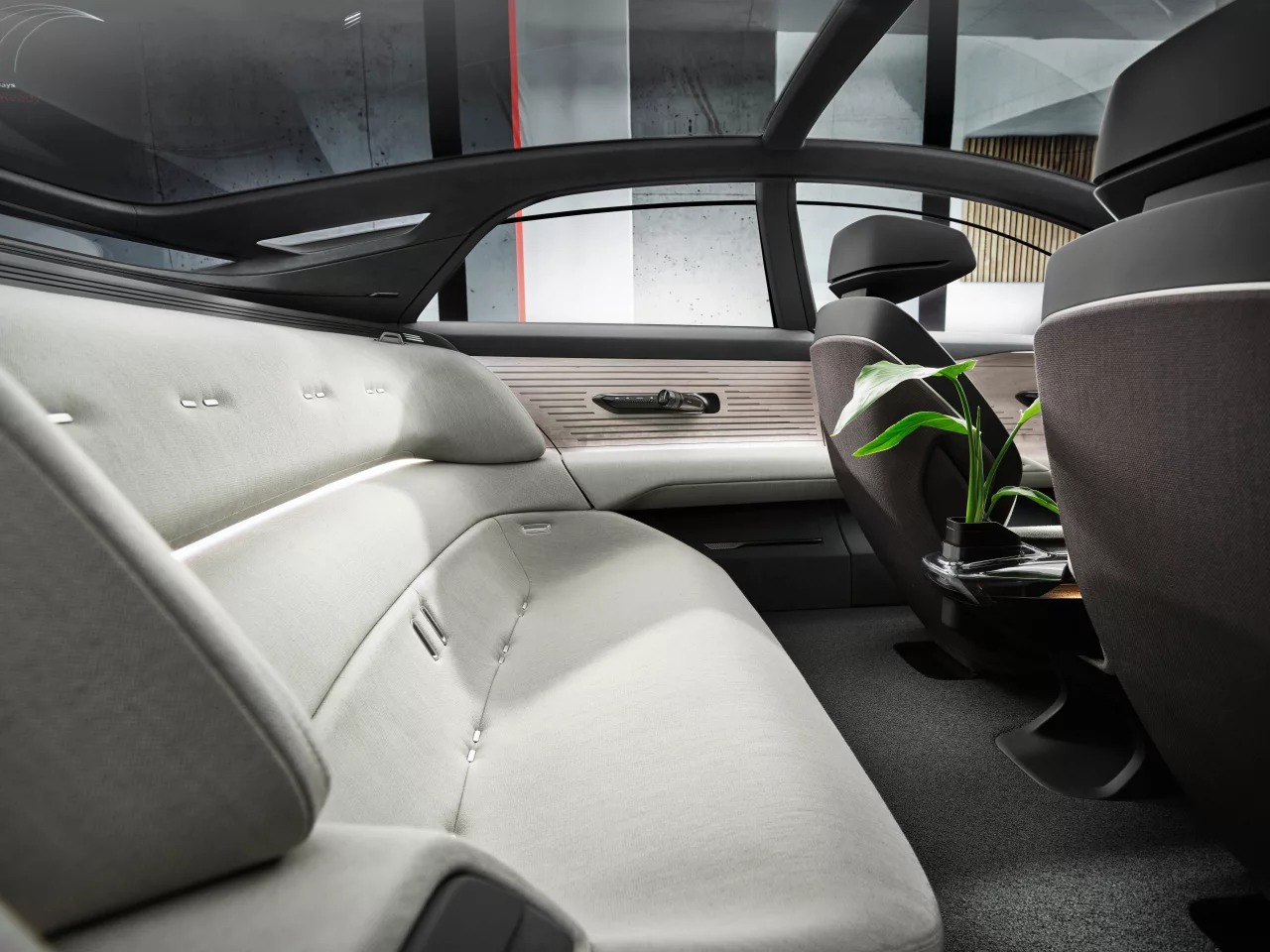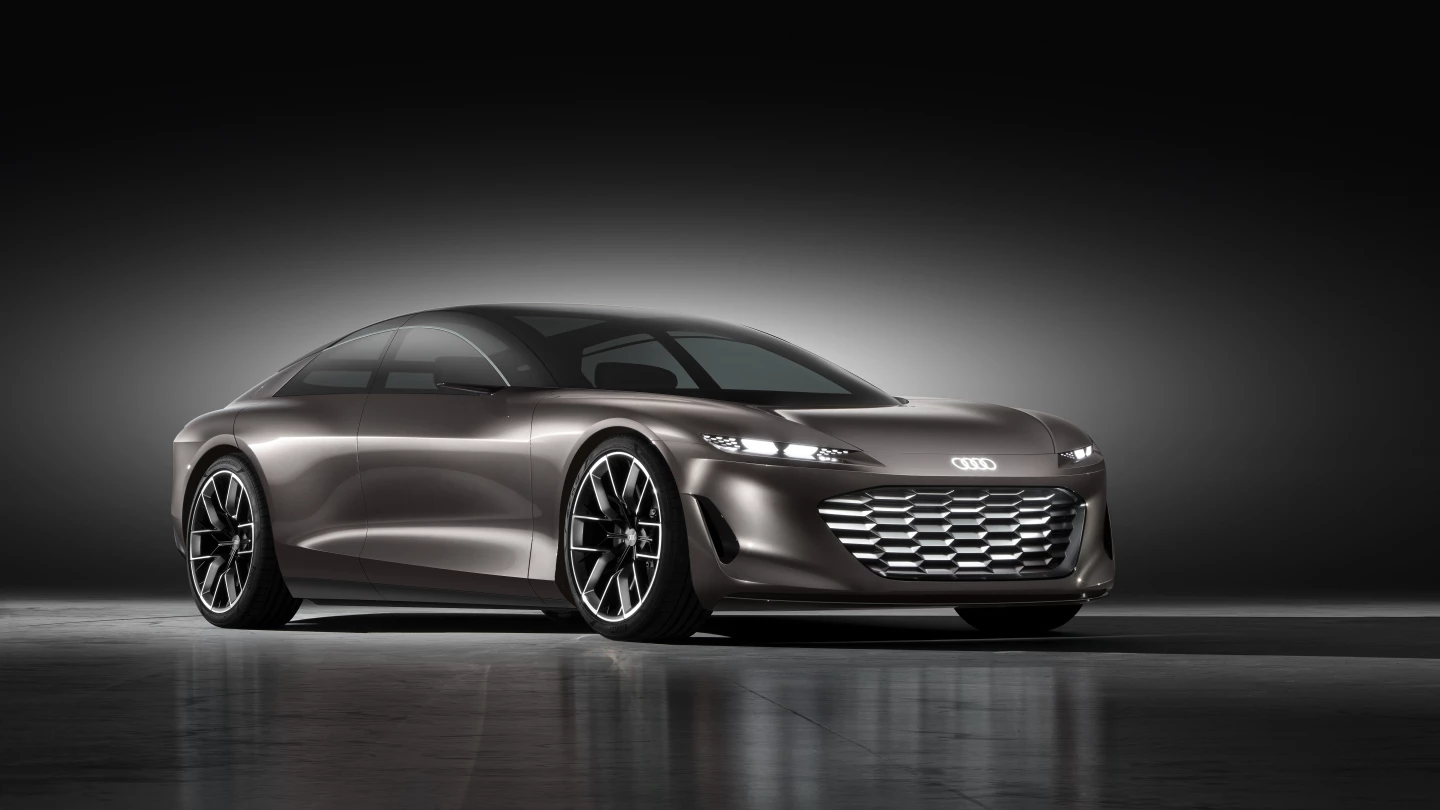When Audi debuted the Skysphere concept last month, we wondered why it didn't use its telescoping car-growth system for a more dramatic transition, perhaps coupe to full-size sedan. As it turns out, it had an entirely separate "sphere" concept planned to fill the latter segment. Inspired by the world of private jets and first class cabins, the new Grandsphere concept shows just how large-vehicle passengers will live in the world of self-driving electric premium sedans. It's Audi's vision of "progressive luxury."
Audi's sphere concept trio explores how Level 4 autonomy opens up new possibilities in terms of in-vehicle space and drive-time experiences. The Grandsphere debuts as the luxury flagship of the group, a stretched, sporty four-door 2+2 that delivers personal space and free time opportunities thus far only available in chauffeured limousines.
As with the Skysphere, Audi's design team started from the inside and worked its way out, the interior "sphere" of personal space supplanting past concerns like powertrain and handling as the first and foremost foundational element of vehicle design. The cabin is accessed through a dramatic B-pillar-free entry that recognizes passengers as they approach and greets each with with wide-swinging front and rear doors, personalized displays and ambient lighting.

The car further recognizes each occupant's preferred seat and climate settings, adjusting accordingly before digging into their personal cloud history to pick up their recently viewed content for display on the car's infotainment system. For instance, the system will pick up a video where Passenger 1 left off on her tablet, and scroll a news story to where Passenger 2 left off reading before he stepped inside the car.
The Grandsphere's front seats look conventional enough, while the rear seats get squeezed into the type of cozy sofa bench that's become popular with autonomous concepts. The manual driving hardware, including steering wheel and pedals, gets cleared out when switching to the autonomous side of Level 4, but oddly the lower dashboard remains in place below the full-width curved projector display. Perhaps it's meant to serve as a desk or table, but it seems to take a big, unnecessary bite out of the open space the concept is designed to free up.

Audi emphasizes the generous interior space with side windows angled inward toward the large glass roof, creating the feel of an all-glass canopy. A horizontal design motif flowing over the door panels emphasizes the vehicle's considerable length.
Audi hosts a full "digital detox" inside the Grandsphere, removing touchscreen displays in favor of a high-resolution projection system that casts infotainment content atop surfaces trimmed in wool, wood, metal and synthetic textiles. In this way, passengers are able to switch the infotainment projector off, leaving nary a hint of digital distraction to detract from their unplugged relaxation. The front seats kick back up to 60 degrees, and the air that streams out of the climate control system is not only temperature-regulated but filtered and scented as desired.

When passengers decide to flip the infotainment on, a sensor system allows for fast eye-tracked gesture control of content. VR goggles, personalized sound systems for each passenger, voice control and touch panels integrated neatly into the doors serve to support the infotainment package.
At 211 inches (535 cm) long, the Grandsphere is roughly 2 inches longer than the current A8 L sedan, the entirety of which finds its way into the 126-in (319-cm) wheelbase. Audi re-proportions the car away from the long hood/low cab of the Skysphere two-door toward a short hood and long flowing roofline with slow Sportback drop.

As with the Skysphere, Audi pinches the rear into a taut, sporty crease emphasized by long, thin tail lamps and held up by an absurdly large rear diffuser. The mesh single-frame grille is more physical and conventional than the digitized grille on the Skysphere, the big 23-in wheels an homage to the 1991 Avus quattro concept.
The Grandsphere carries a 120-kWh battery between its two drive axles, firing up the front and rear motors to distribute up to 711 hp and 708 lb-ft (960 Nm) out to all four wheels via an electronic quattro system. Audi reckons the car can travel up to 466 miles (750 km) per charge, relying on an 800-volt electrical architecture to suck 186 miles (300 km) worth of charge back into the battery in about 10 minutes. Rear-wheel steering and active air suspension help the car handle all manners of roadway in front of the bumper.

Audi revealed the Skysphere just ahead of its official Pebble Beach world premiere, and it reveals the Grandsphere ahead of its official unclothing at the inaugural IAA Mobility show in Munich, which opens to the media on Monday. The car itself won't make it to dealerships, but Audi does point out that various technologies and design features will make their way to production models. The Urbansphere will complete Audi's concept triple play in 2022.
Source: Audi

















